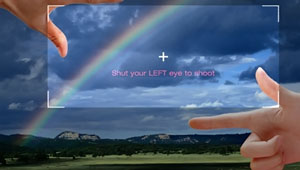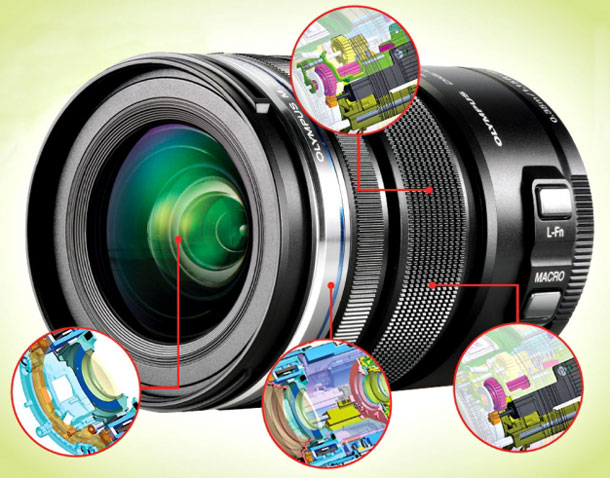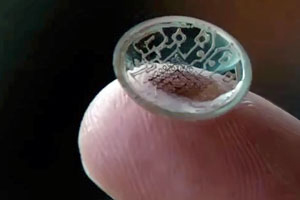Photokina 2012 once again shows the industry’s latest and greatest — and gives some hints of what’s to come. Let’s have a look into the crystal ball to get a glimpse of the future of photography. How will we be taking pictures in the not too distant future?

Mirrorless Perfection
You don’t have to be a rocket scientist to foresee this trend. Full-frame in compact bodies is the next challenge, and we’ll get there rather sooner than later. For most users the classic DSLR, a dinosaur in today’s photography world, makes no sense no more. Soon DSLRs and mirrorless are up on par, except for differences in equivalence, but that’s rather a dogmatic issue.
Markets in more tech-savvy regions such as Japan and Korea see a much faster transition from legacy gear to compact mirrorless than the “old world.” The SLR’s 70-year long dominance is history, but hey, legacy systems are the dominant players’ cash cow. They do everything it takes to slow down the accelerating trend towards powerful compactness.
WVIL
As digital cameras have outgrown their bulky origins and continued to miniaturize, some photographers and cinematographers joke that soon the “camera” itself will disappear, leaving just a lens with a chip and a screen on the back of it. Et voilà the WVIL concept camera (wireless viewfinder interchangeable lens):
The patent-pending WVIL system takes the connectivity and application platform capabilities of today’s smartphones and wirelessly connects them with interchangeable full SLR-quality optics. It is the inevitable solution for photographers who expect the power of modern mobile devices but who also demand uncompromised quality.
Phoneoghraphy
Miniaturization and improved optics and processing speeds will certainly further popularize the use of the phone as a camera. DSLRs are a dying breed, in a few years they’ll mainly cater for specialized photography. In the not too distant future we’re able to buy multi-functional, multi-purpose mobile devices making much of today’s gear redundant, again without compromise on image quality.
Lytro
Lytro may not yet be ready for the shelves, nevertheless first models of this new camera and new way to take and experience pictures can be ordered. The Lytro allows you to shoot now and focus later.

Lytro, however, is so fundamentally different from the photography we know, that it’s not unlikely that today’s photographers simply don’t yet “get it.” Lytro is in its very early stages and still more of a concept than functional reality. But watch out once Lytro further evolves.
New Sensors
New sensor designs and formats, as well as improvements in manufacturing, promise higher resolution and less noise, with little tradeoff in terms of cost.
Fujifilm is trying to add resolution by scrapping the low-pass filter most digital cameras have in front of the sensor, where it works as an anti-aliasing filter to fight moiré effects. The X-Trans sensor uses a color filter array that is said to mimic the grain in film, which forms a random pattern. Fujifilm believes this will cut moiré while eliminating a layer of glass for a sharper image.
Fujifilm is not alone in removing the low-pass filter — the Nikon D800E comes without one. And new software has also begun to account for moiré: Both Adobe Lightroom 4 and Nikon Capture NX 2 include a tool to reduce it.
Thanks to advances in manufacturing, better-performing sensors have begun to appear in more and more compacts — even point-and-shoots.
Also, stills and video merge. Capturing high quality, full resolution stills and HD video simultaneously will be the new standard.
Remaking the Lens
Taking their cues from camcorders, lens makers have begun to add silent electronic zooms for video, while retaining the manual zoom controls stills shooters are used to. And lighter, smaller, more versatile optics are proliferating.

New designs, such as the Olympus 12–50mm F3.5–6.3 EZ kit lens for the OM-D line, let you switch between manual and electronically controlled zooming and AF. You’re able to uncouple the zoom motor from the mechanics that move the elements, and operate it manually. Then you can seamlessly switch back for three-speed electronic zooming that’s great for movies. There’s no more mechanical linkage with the body, so your imagination can run wild as to how you control the lens.
Augmented Reality

The Contact Lens Camera
Mission Impossible: Ghost Protocol with Tom Cruise features contact lenses that allow the user to take pictures of what he’s looking at by blinking, then wirelessly transmit them to a computer.

It is comprised of a micro-scale electronic components positioned directly on the surface of the contact lens. This active contact lens system functions by enabling real-time information display. This is like a contact lens camera.
The point is, our grasp of semiconductors and optics is now so advanced that we can shrink all of the necessary components for a computer display into a contact lens. Bionic vision really is just around the corner now. Potential applications considered? Anything really.
“Bionic photography.”
Remember, you heard it on THEME first.


